The Role of Stansted Airport in Clean Energy Production
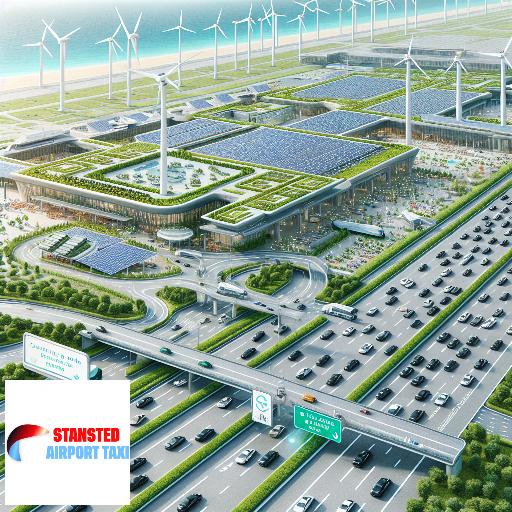
Stansted Airport's Solar Power Initiatives
Stansted Airport, one of the UK's busiest airports, is making significant strides in clean energy production through its solar power initiatives. The airport has installed a 2.5MWp solar farm, which is expected to reduce its carbon emissions by nearly 2,000 tonnes annually. This initiative is part of the airport's commitment to achieving net-zero carbon emissions by 2030. The solar farm, which consists of over 8,000 solar panels, will generate enough electricity to power the equivalent of over 600 homes annually. This not only reduces the airport's reliance on non-renewable energy sources but also contributes to the UK's broader goal of achieving net-zero carbon emissions by 2050. Stansted Airport's solar power initiatives are a shining example of how airports can play a significant role in clean energy production, setting a precedent for other airports worldwide to follow.
Wind Energy Production at Stansted Airport
Stansted Airport is making significant strides in the realm of clean energy production, with a particular focus on wind energy. The airport has installed a wind turbine that generates a substantial portion of its electricity needs, reducing its reliance on non-renewable energy sources. This initiative is part of the airport's broader commitment to sustainability and reducing its carbon footprint. The turbine not only powers the airport's operations but also feeds excess energy back into the national grid, contributing to the overall clean energy production in the UK. The success of this project at Stansted Airport serves as a model for other airports and large facilities to harness wind energy. It demonstrates the potential of renewable energy sources in reducing environmental impact and promoting sustainability. Stansted Airport's wind energy production is a significant step towards a cleaner, greener future, positioning the airport as a leader in clean energy production.
Stansted Airport's Energy Consumption
Stansted Airport, one of the busiest airports in the UK, has been making significant strides in clean energy production. The airport has been actively reducing its energy consumption through various innovative measures. It has installed LED lighting throughout the airport, which has significantly reduced its energy usage. Additionally, the airport has implemented a state-of-the-art building management system that optimizes energy use in heating, ventilation, and air conditioning. Moreover, Stansted Airport has also invested in renewable energy sources. It has installed solar panels on several of its buildings, which not only reduces its reliance on non-renewable energy but also contributes to the national grid. The airport's commitment to clean energy production is commendable and sets a benchmark for other airports worldwide. Stansted Airport's efforts in reducing energy consumption and promoting clean energy production play a crucial role in combating climate change. It serves as a shining example of how airports can contribute to a sustainable future.
Biofuel Usage at Stansted Airport
Stansted Airport is making significant strides in the realm of clean energy production through its innovative use of biofuels. The airport has been actively exploring the potential of biofuels as a sustainable alternative to traditional aviation fuel. This initiative is part of the airport's broader commitment to reducing its carbon footprint and contributing to the global fight against climate change. Biofuels, derived from organic materials such as plants and waste, emit significantly less carbon dioxide compared to fossil fuels. Stansted Airport's biofuel usage not only reduces its environmental impact but also sets a precedent for other airports worldwide. The airport's pioneering efforts in biofuel usage underscore its role as a leader in clean energy production. This initiative is a testament to Stansted Airport's commitment to sustainability and its proactive approach to tackling one of the most pressing issues of our time.
Stansted Airport's Energy Efficiency Measures
Stansted Airport has taken significant strides in promoting clean energy production, positioning itself as a leader in energy efficiency measures. The airport has implemented a series of initiatives aimed at reducing its carbon footprint and promoting sustainable practices. These include the installation of LED lighting throughout the airport, which not only reduces energy consumption but also improves visibility and safety. The airport has also invested in electric vehicles for ground operations, further reducing emissions. Additionally, Stansted has installed solar panels on several of its buildings, harnessing renewable energy to power its operations. The airport's commitment to energy efficiency extends to its buildings, with energy-efficient design principles incorporated into its infrastructure. These measures not only contribute to a cleaner environment but also result in significant cost savings for the airport. Stansted's commitment to clean energy production sets a strong example for other airports and industries to follow.
Stansted Airport's Carbon Neutral Goal
Stansted Airport has set a commendable example in the aviation industry by setting a goal to become carbon neutral. This initiative is part of the airport's commitment to clean energy production and sustainable operations. The airport has implemented several measures to reduce its carbon footprint, including the use of renewable energy sources, energy-efficient technologies, and waste management systems. The airport's management is also exploring innovative solutions such as electric-powered ground handling equipment and the use of sustainable aviation fuels. Stansted's carbon-neutral goal is not only a significant step towards environmental sustainability but also a testament to its role in promoting clean energy production. This initiative is expected to inspire other airports and industries to adopt similar sustainable practices. Stansted Airport's commitment to carbon neutrality is a significant stride in the global fight against climate change.
Electric Vehicles at Stansted Airport
Stansted Airport is taking significant strides towards clean energy production by embracing the use of electric vehicles (EVs). The airport has integrated EVs into its operations, reducing carbon emissions and contributing to a more sustainable environment. The airport's fleet of electric buses transports passengers between terminals and aircraft, reducing the airport's carbon footprint significantly. Additionally, Stansted Airport has installed numerous EV charging stations, encouraging staff and passengers to switch to electric vehicles. This initiative not only promotes the use of clean energy but also aligns with the UK's goal of achieving net-zero carbon emissions by 2050. Stansted Airport's commitment to clean energy production through the use of electric vehicles sets a commendable example for other airports worldwide. It demonstrates that the transition to clean energy is not only possible but also beneficial for both the environment and the economy.
Stansted Airport's Waste-to-Energy Initiatives
Stansted Airport has taken a significant step towards sustainability with its innovative waste-to-energy initiatives. The airport has implemented a state-of-the-art waste management system that converts non-recyclable waste into energy. This initiative not only reduces the amount of waste going to landfill but also contributes to clean energy production. The system works by incinerating waste at high temperatures, generating heat which is then converted into electricity. This electricity is used to power the airport's facilities, reducing its reliance on fossil fuels. The waste-to-energy plant at Stansted Airport is capable of processing up to 20 tonnes of waste per day, generating enough electricity to power over 2,500 homes. This initiative is a testament to Stansted Airport's commitment to sustainability and clean energy production. It sets a benchmark for other airports and industries to follow, demonstrating that waste can be a valuable resource when managed effectively.
Water Conservation at Stansted Airport
Stansted Airport is playing a pivotal role in water conservation and clean energy production. The airport has implemented a comprehensive water management strategy, which includes the collection and reuse of rainwater, reducing its reliance on mains water. This initiative not only conserves water but also reduces energy consumption associated with water treatment and transportation. Furthermore, Stansted Airport has installed solar panels on its buildings, contributing to clean energy production. The energy generated is used to power the airport's operations, reducing its carbon footprint. The airport's commitment to water conservation and clean energy production is a testament to its dedication to sustainable practices. These initiatives not only benefit the environment but also set a positive example for other airports and industries to follow. Stansted Airport's efforts in water conservation and clean energy production are commendable and demonstrate the significant role it plays in promoting environmental sustainability.
Stansted Airport's Environmental Policies
Stansted Airport has been at the forefront of implementing robust environmental policies, playing a significant role in clean energy production. The airport has committed to achieving net-zero carbon emissions by 2038, a goal that is 12 years ahead of the UK aviation industry target. This commitment is underpinned by a comprehensive strategy that includes the use of renewable energy sources, energy efficiency measures, and carbon offsetting. The airport has already made significant strides in this direction, with 70% of its energy currently sourced from wind power. Additionally, Stansted Airport has installed LED lighting throughout its premises, contributing to a 20% reduction in its energy consumption. The airport also encourages sustainable travel among its staff and passengers, offering incentives for using public transport. These initiatives demonstrate Stansted Airport's commitment to environmental sustainability and its leading role in the transition towards clean energy in the aviation industry.
Our Latest Blog Posts

Stansted Airport: A Guide to the Continuous Improvement Process
Stansted Airport exemplifies a continuous improvement process, constantly enhancing its services and facilities. From streamlining security procedures to upgrading lounges, it prioritizes passenger ...

Stansted Airport: A Guide to the Orientation Process
Stansted Airport, a bustling hub for international travel, offers a streamlined orientation process. With clear signage, helpful staff, and efficient services, navigating through check-in, security ...
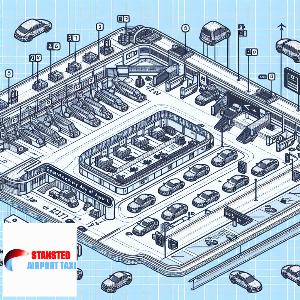
Stansted Airport: A Guide to the Demotion Process
Stansted Airport's demotion process involves a systematic approach to downsizing operations. This includes reducing flight schedules, reallocating resources, and restructuring staff roles, ensuring ...

Stansted Airport: A Guide to the Crisis Management Process
Stansted Airport's crisis management process is a well-structured system, designed to handle emergencies effectively. It involves swift decision-making, clear communication, and efficient coordinat ...

The Role of Stansted Airport in Clean Energy Production
Stansted Airport plays a pivotal role in clean energy production, utilizing renewable sources to power operations. Its commitment to sustainability includes solar panels and wind turbines, signific ...

The Role of Stansted Airport in Military Operations
Stansted Airport, a significant UK transport hub, plays a crucial role in military operations. It serves as a strategic location for troop deployment, equipment transportation, and emergency landing ...

Exploring the Facilities at Stansted Airport
Stansted Airport boasts a plethora of facilities for travelers. From a wide range of eateries and shops to comfortable lounges and efficient transport links, it ensures a seamless travel experience ...

Stansted Airport: A Guide to the Audit Process
Stansted Airport's audit process ensures operational efficiency and safety. It involves rigorous checks on security, baggage handling, and customer service. This guide provides an insight into the ...

Stansted Airport: A Guide to the Litigation Process
Stansted Airport has been a focal point of legal disputes, involving expansion plans and environmental concerns. This guide explores the litigation process, providing insight into the complexities ...
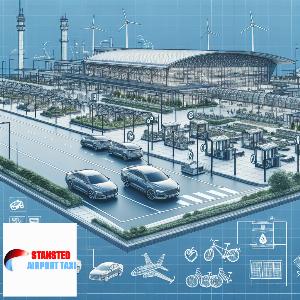
The Environmental Initiatives of Stansted Airport
Stansted Airport is leading in environmental initiatives, implementing measures like waste recycling, energy efficiency, and noise reduction. Their commitment to sustainability is evident in their a ...

The Role of Stansted Airport in Eco-Tourism
Stansted Airport plays a pivotal role in eco-tourism, promoting sustainable travel by implementing green initiatives. It reduces carbon emissions, encourages recycling, and supports local biodivers ...

Understanding the Layout of Stansted Airport
Stansted Airport's layout is user-friendly, featuring one main terminal with three satellite buildings. It offers various amenities including shops, eateries, and lounges. Understanding its layout e ...

The Role of Stansted Airport in Environmental Advocacy
Stansted Airport plays a significant role in environmental advocacy, implementing sustainable practices like waste reduction and energy efficiency. It actively promotes eco-friendly travel, contrib ...
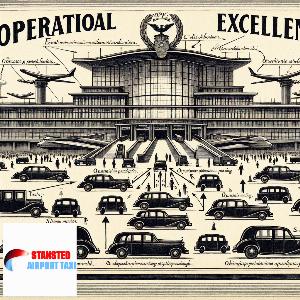
Stansted Airport: A Guide to the Operational Excellence Process
Stansted Airport exemplifies operational excellence through efficient processes. Its streamlined check-in, security, and boarding procedures ensure a smooth passenger experience. The airport's comm ...

Stansted Airport: A Guide to the Feedback Process
Stansted Airport values passenger feedback for continuous improvement. The process involves sharing experiences through their website or customer service desks. Feedback is analyzed and used to enh ...

Stansted Airport: A Guide to the Selection Process
Stansted Airport offers a seamless selection process for travelers. With clear signage, efficient security checks, and a variety of airlines and destinations, it ensures a stress-free journey. Its ...
Blogs Pages
The Role of Stansted Airport in Clean Energy Production

Blog about The Role of Stansted Airport in Clean Energy Production...
Stansted Airport: A Guide to the Continuous Improvement Process

Blog about Stansted Airport: A Guide to the Continuous Improvement Process...
Stansted AirportA Guide to the Check-In Process

Blog about Stansted AirportA Guide to the Check-In Process...
Stansted Airport: A Guide to the Crisis Management Process

Blog about Stansted Airport: A Guide to the Crisis Management Process...
The Role of Stansted Airport in Research and Development

Blog about The Role of Stansted Airport in Research and Development...
The Role of Stansted Airport in Sustainable Transport

Blog about The Role of Stansted Airport in Sustainable Transport...
Stansted Airport: A Guide to the Survey Process
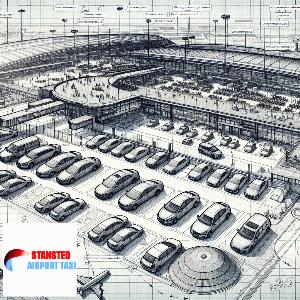
Blog about Stansted Airport: A Guide to the Survey Process...
The Role of Stansted Airport in Renewable Energy Generation

Blog about The Role of Stansted Airport in Renewable Energy Generation...
The Role of Stansted Airport in Climate Change Mitigation

Blog about The Role of Stansted Airport in Climate Change Mitigation...




